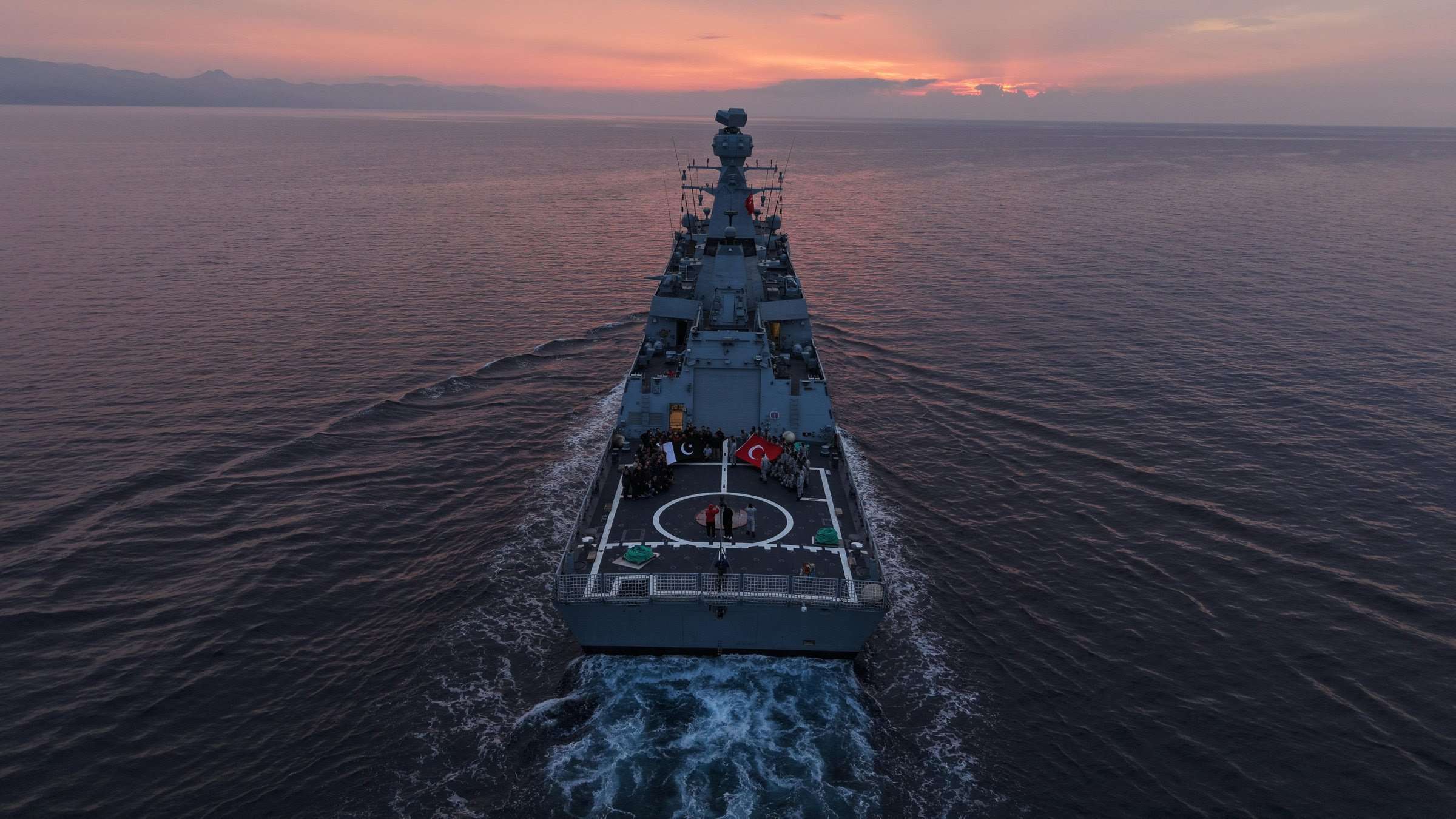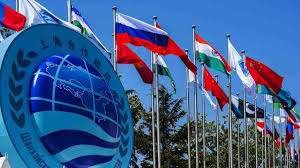How Türkiye is building a global navy

Türkiye’s MILGEM program is transforming its navy into a rising global maritime power and major warship exporter
The Turkish navy is among the world’s largest naval warfare forces. With its number of warships and modern capabilities, the Turkish Naval Forces safeguard the Eastern Mediterranean, the Aegean Sea and the Black Sea. With a total of nearly 200 warships, placing it among the world’s largest fleets, the Turkish navy competes with Europe’s major naval powers. Currently, 31 warships are under construction in various Turkish shipyards for the navy. These vessels are all components of the National Ship Project (MILGEM). Under the same program, Turkish engineers are also building warships for Pakistan, Malaysia and Ukraine. As one of the largest defense exports of Türkiye, MILGEM warship sales are helping the Turkish navy strengthen its position among global military actors, similar to other branches of the Turkish Armed Forces (TSK). Initiated in the 1990s and now producing naval combat platforms across multiple classes, the MILGEM project aims to meet the needs of the Turkish navy using domestic resources. Several platforms – such as submarines, corvettes, offshore patrol vessels and intelligence ships – have already been delivered to the Turkish navy. Deliveries to the Pakistan Navy have also been made, and joint production efforts are ongoing. Similar activities continue for Malaysia and Ukraine as well. More than 200 companies currently participate in the MILGEM project.
Assessing the Turkish navy’s current standing through its existing platforms highlights the importance of the MILGEM initiative. With 17 frigates, the Turkish navy ranks as the world’s third-largest actor in this category. The TCG Anadolu, classified as a helicopter carrier, places Türkiye fifth globally in this class of vessels. The navy also ranks eighth worldwide with nine corvettes and eighth with 13 submarines, and maintains top-10 positions across several other classes. As the warships being built under the MILGEM program enter service, the Turkish navy is expected to achieve even higher rankings globally. The eventual addition of nuclear-powered submarines and an aircraft carrier would transform the Turkish navy into a fully global maritime force. Completing the MILGEM project is essential for developing ocean-going operational capability and ensuring the ability to project power to key regions. Considering that work on larger and more modern warships is already underway, the Turkish navy is likely to attract greater international attention in the coming years. In this context, the corvettes exported to Pakistan stand out as a critical example. Three additional MILGEM warships will be delivered soon to the Pakistan Navy, and work continues for the Royal Malaysian Navy as well. Turkish defense industry products – such as unmanned aerial vehicles (UAVs), armored ground vehicles, the Altay main battle tank and the Hürkuş trainer aircraft – have drawn significant global interest. A similar level of interest can be expected for the MILGEM program.
The MILGEM project, for which STM serves as the main contractor, is carried out in cooperation with numerous subcontractors. Of the corvettes to be exported to Pakistan, two are being built at the Istanbul Naval Shipyard Command, while the other two are being constructed at Karachi Shipyard in Pakistan. The export of naval platforms of this scale for the first time marks a critical milestone, demonstrating the level the Turkish defense industry has reached. Incorporating Istif-class frigates and TF-2000-class destroyers, MILGEM elevates Türkiye’s shipbuilding industry through domestic capabilities while enabling the export of advanced naval technologies. When viewed as a whole – including the construction of the Hisar-class offshore patrol vessel – the MILGEM program represents a global-scale industrial initiative. In a comparable example, South Korea’s shipbuilding industry – today capable of producing some of the world’s largest commercial and military vessels – was established through steps taken in the 1970s. Now representing roughly 2% of the global economy, South Korea has become a major global actor in shipbuilding. Similarly, the experience and infrastructure gained through MILGEM could elevate Türkiye’s shipbuilding sector to a much higher level. Given its geography, with three coasts surrounded by seas, Türkiye has the potential to achieve significantly greater production capacity. Realizing this potential, as seen in worldwide examples, depends on sharing military-grade technologies with the private sector. In this regard, MILGEM stands out with more than 200 subcontracting firms.
Having won the tender to build three corvettes for the Royal Malaysian Navy, STM has secured a new export opportunity in Southeast Asian waters following its success in Pakistan. With the participation of other Turkish defense industry firms – such as Havelsan, Aselsan, Roketsan – the MILGEM project aims to strengthen the Royal Malaysian Navy against regional actors. Disputes and tensions in the South China Sea have created new operational requirements for the country’s naval forces. The warships to be built in Turkish shipyards are expected to be delivered within 3.5 years, and additional exports to other countries are anticipated in the 2030s. Another naval platform export led by STM was made to Ukraine. Following agreements signed in 2020, the construction of corvettes for Ukraine began. All vessels are scheduled for delivery by 2027, making Türkiye the first and only country to export a corvette to Europe. Having exported Hürkuş aircraft to Spain, UAVs and UCAVs to Poland, armored vehicles to Romania, and warships to Ukraine, Türkiye is also planning to jointly develop unmanned aerial platforms with Italy.
It is estimated that the total cost of the warships currently under construction within the scope of the MILGEM project amounts to approximately $10 billion, and that once all of them are exported, revenues could reach nearly twice their cost. The overall volume of ongoing projects in the Turkish defense industry has reached $100 billion, with around 10% of this figure consisting of platforms built for the Turkish navy. The increase in total project volume from $75 billion to $100 billion over the last three years, along with the start of construction of the T.C. Trakya aircraft carrier, demonstrates the increasingly global scale of the sector. Designed to operate alongside the Kaan fighter jet and set to become the largest warship of the Turkish navy, the T.C. Trakya will enhance the navy’s capacity to conduct operations across the oceans. From this perspective, the MILGEM project is expected to elevate Turkish warship technologies to the level of their Western counterparts. As one of the world’s largest navies relative to national economic size, the Turkish Naval Forces play a key role in safeguarding Türkiye’s interests at sea, including in the Eastern Mediterranean. If Türkiye is to better defend its rights on land and at sea, it must build a global-scale naval power alongside its other strategic military capabilities – a goal that makes the MILGEM project essential.
In conclusion, the MILGEM project is being developed as a critical component of national security. Designed to enhance the Turkish navy’s capabilities using domestic and modern technologies, the project is expected to create one of the world’s most powerful naval strike forces by the 2030s. While enabling exports to countries such as Malaysia, Ukraine and Pakistan, it will also contribute to increasing global recognition and demand for the “Made in Türkiye” brand within the defense industry.





